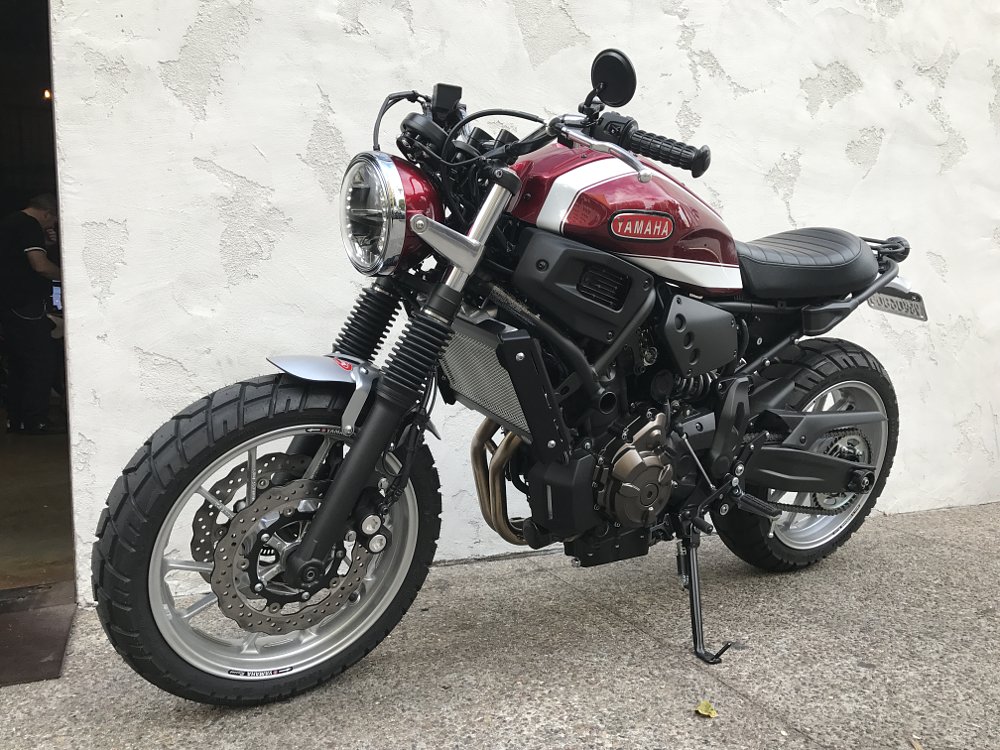This is not the story of a bike fueled by performance specs and outrageous horsepower statistics. Rather this is the story of a bike engineered to fan the flame of imagination that got us into motorcycling to begin with, in the hope that it can spark that same flame in some new riders.
Yamaha’s new XSR700 speaks to me because it wasn’t so long ago I was the target demographic for this bike. I spent my high school years hanging out at motorcycle shops looking at the boxy outlines of then discarded Japanese relics collecting dust in the back corners of showrooms. At the time, the renaissance of the 1970s UJM was still a few years away.

I loved the style of those old Japanese machines. I pictured myself with a bike of my own, covered in grease and working late nights in my parents' garage to bring it back. When it finally kicked to life, I dreamed I would ride away with the girl on the back. It would be like when Adrian Grenier rode through the halls of his high school in The Adventures of Sebastian Cole. The only problem was I didn’t know how to work on bikes, nor did I have “a girl” let alone “the girl,” and let’s face it ladies and gentleman, I am no Adrian Grenier.
Needless to say, I like the idea of bikes that pay homage to their roots. The XSR700 shares similarities to the stylistic lines that defined a generation of machines while being powered and controlled by modern, reliable technology. Bikes like these allow new riders to get into the sport with a motorcycle that pleases the eye and encompasses the essence of cool.
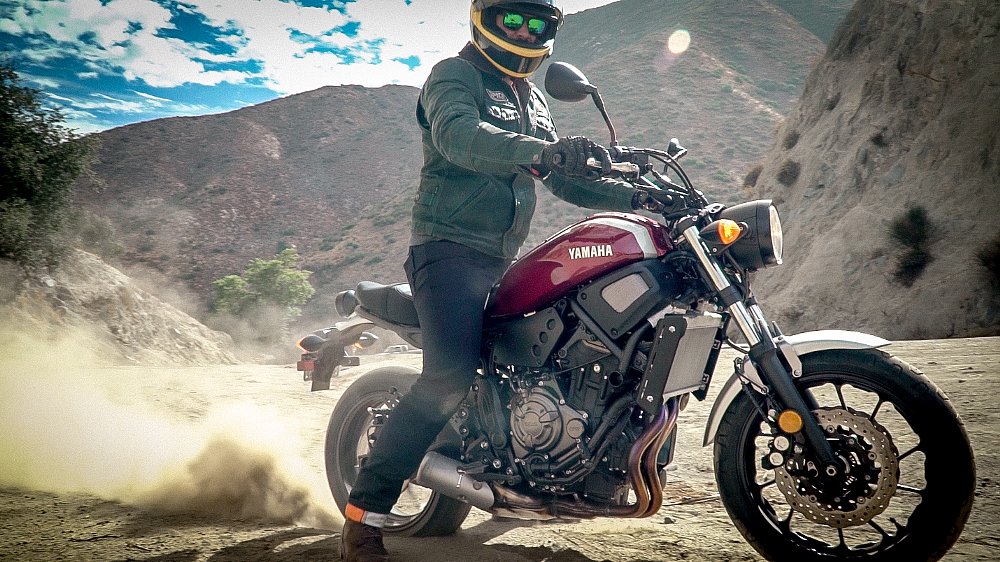
The Yamaha XSR700
At first glance, the XSR700 looks damn near identical mechanically to the FZ-07. Both bikes share the same chassis and engine, a 689 cc parallel twin that makes a claimed 74 horsepower and 50 foot-pounds of torque. On paper, it looks as though there are minor differences between the two bikes' rake and wheelbase numbers, but Yamaha assures me that this is not the case. According to Yamaha, the difference in the data is due to minor discrepancies when collecting the measurements (such as the rear wheel adjusted differently or the softer suspension on the FZ-07).
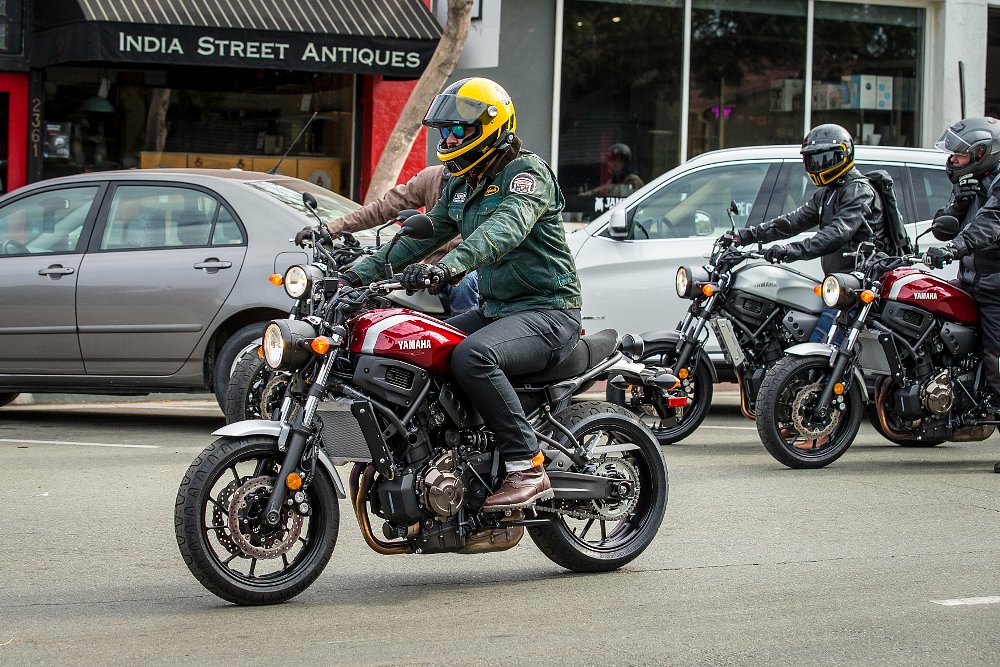
Much of what we already know about the FZ-07 carries over to the XSR700. But it’s important to note that for 2018 the FZ-07 will receive its own set of changes, the first of which is a new name. In order to simplify international naming conventions the FZ line of bikes will be redubbed with the MT prefix, to match their European counterparts.
While the fundamentals of the two machines are the same, the XSR700 sets itself apart in three main ways: style, ergonomics, and suspension. These are the changes you can expect should you decide to opt for an XSR700 over an MT-07.
Style
If this bike looks familiar, it should. The XSR700 has been available in Europe since 2016 and it receives its classically inspired styling cues from its bigger brother, the XSR900, which we reviewed last year. Just as the XSR900 was built on the same chassis of Yamaha’s wildly popular naked sport bike, the FZ-09, the XSR700’s DNA stems from the FZ-07. The XSR’s heritage styling is its most notable differentiating feature.
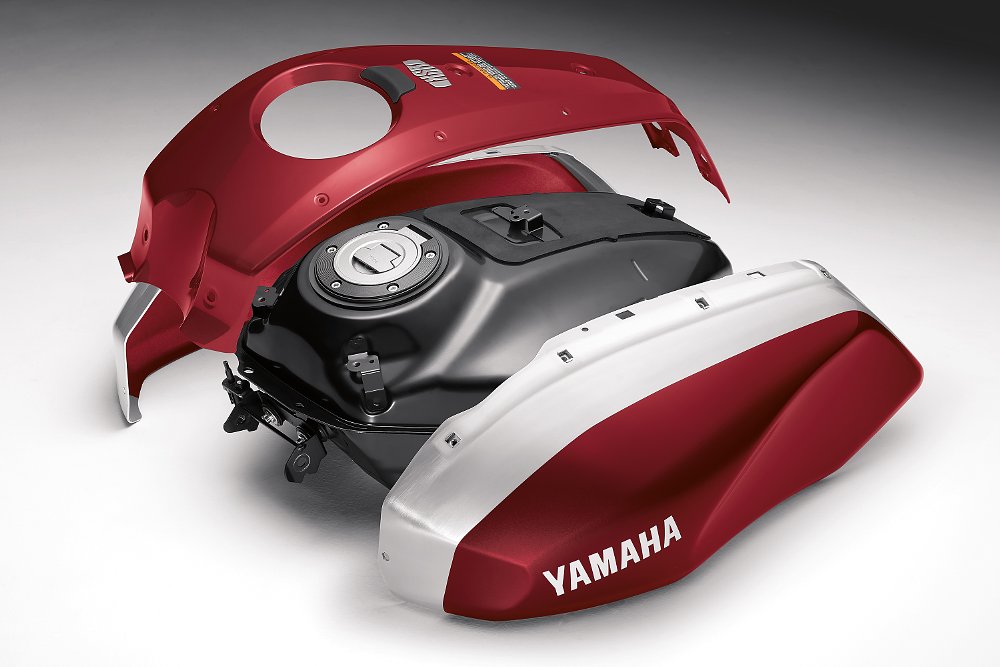
The gas tank that you see is actually aluminum side panels with a plastic center panel mounted to a plastic fuel cell. These panels, which make up the gas tank, give the XSR its historic lines. But what if you don’t like the color? Because the panels are removable, it is super easy to have them painted custom colors without the hassle of having to paint an entire tank.
That’s important because customization is the name of the game for the XSR700. With removable passenger pegs and a removable rear sub-frame, Yamaha is encouraging riders to start swapping parts to individualize their bike’s style even further. And in order to demonstrate how easy this is, they had Greg Hageman of Hageman motorcycles, build a one-off bike using the XSR700 as a platform.
“My goal was to build a bike that would be easy to replicate,” Greg announced cheerfully. “I want folks to look at this piece and get inspired. And hopefully once they learn that these are all just bolt-on parts that are readily available, they’ll take a step into getting their hands a bit dirty as well.”
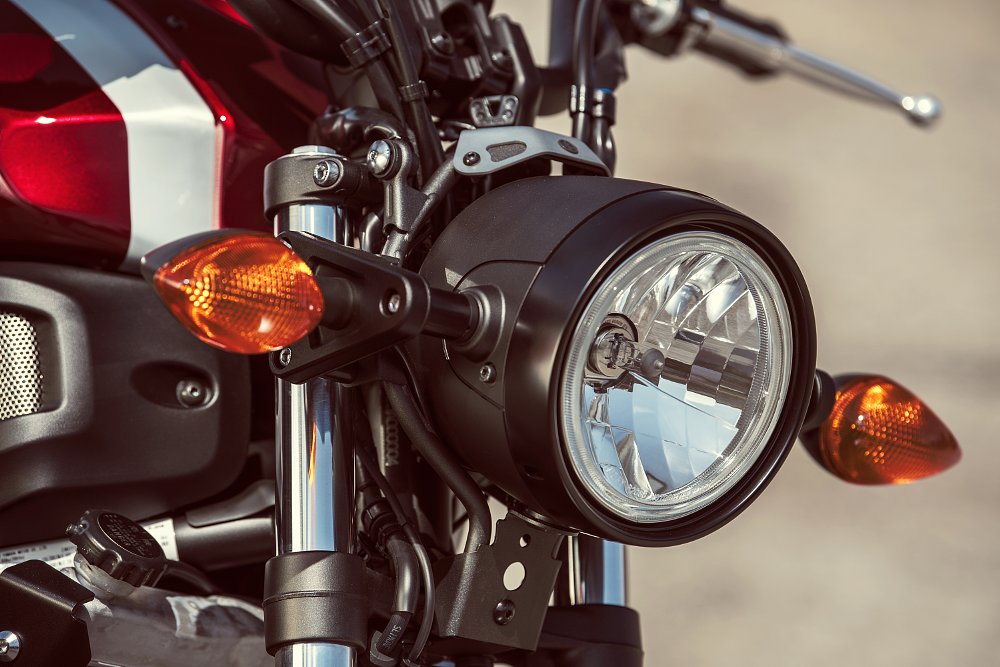
Personally, I think the XSR700 does an even better job than the XSR900 when it comes to style. This bike really looks great in person. That’s not to say I am not going to ding it for a few things. For example, I don’t understand why Yamaha insists on continuing to use these large, bulbous turn signal indicators. They completely detract from the style. There are also a lot of loose wires and cables running off the handlebar. I get that this is a naked bike but I would imagine they could have figured out a better way to hide them. Lastly, I wish they would have gone with a more traditional headlight assembly; something like the old chrome “puddin’ bowl” would have worked just fine.
Ergonomics
The XSR700 is a bit more relaxed in its seating position. The first thing riders will notice is the seat height. At 32.9 inches, it’s more than an inch taller than the MT-07’s seat.
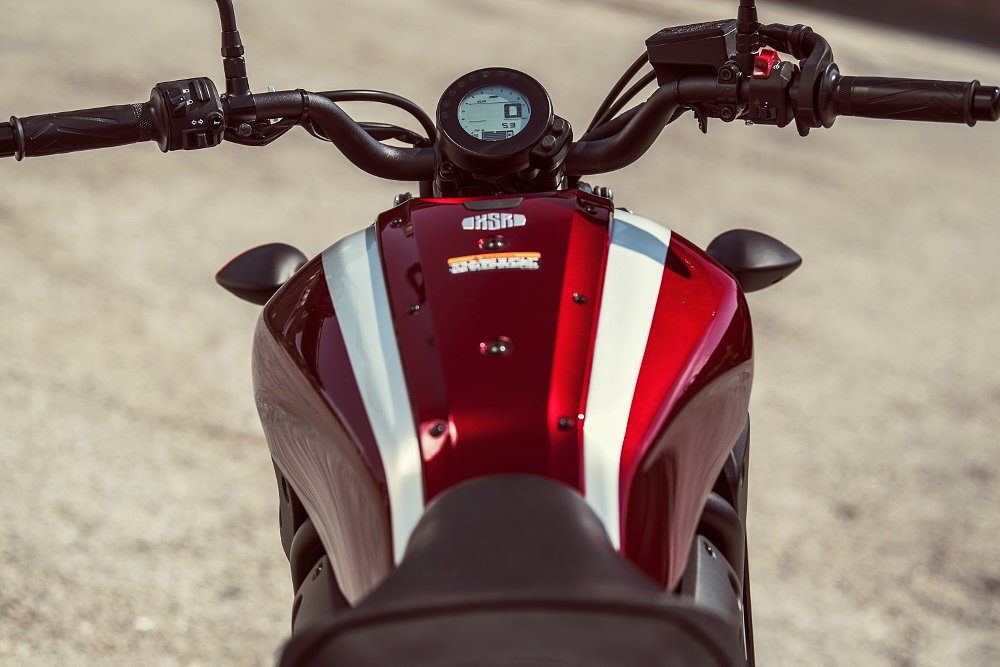
The handlebar is wider than the old FZ’s by almost three inches. This allows for quick and easy steering inputs when you’re leveraging your weight and trying to get the bike to turn in a hurry. The handlebar also sits taller and closer to the rider, giving the bike a slightly more upright stance.
At one point during the ride, Chris Nelson, from Iron and Air, looked over at me and said, “Dude, you’re huge. You make that thing look like a Grom!” At six feet, three inches, I make a lot of motorcycles look like Honda Groms. You should see what I make a Grom look like (or a Kawasaki Z125 Pro, for that matter). But the truth is I found the seating position to be rather comfortable. I didn’t feel cramped at all. I liked the upright placement of the handlebar while riding around the city, and I was still able to tuck down and guide the XSR through the canyons at a more spirited pace.
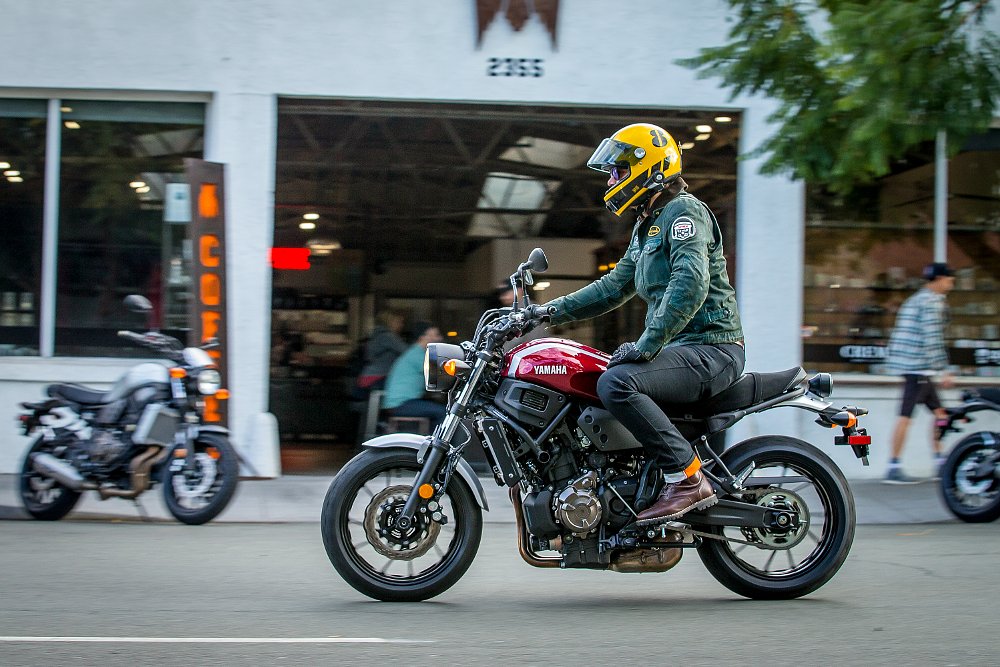
Suspension
The XSR700’s suspension features the most technical change in performance over the outgoing 2017 FZ-07. Yamaha acknowledged and set out to address some of the FZ's shortcomings.
Yamaha started with upgraded springs that are six percent stiffer in the fork and 11 percent stiffer on the shock. Damping was increased as well, with 16 percent more rebound damping in the fork while the rear shock received a 30 percent increase in rebound damping and a 40 percent increase in compression damping. The only adjustment available is still the nine clicks of preload at the rear shock.
So what the hell do all of those numbers mean for you?
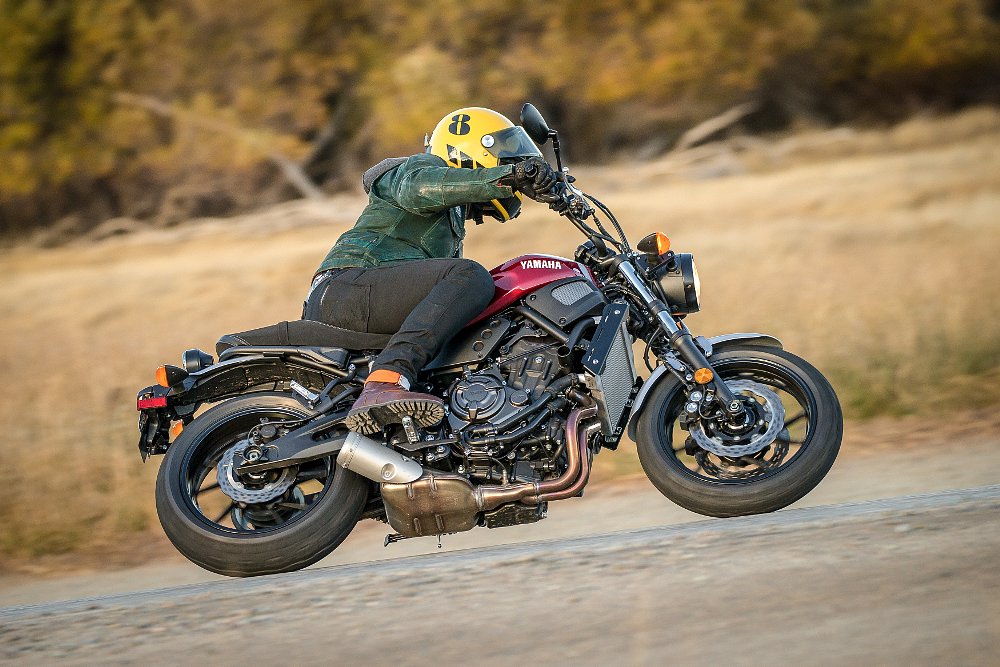
For starters, the XSR feels more planted and stable, even when we started pushing the bikes in the canyons outside of San Diego. At 215 pounds, I am a bit heavier than the average rider, however I was really impressed with how this bike handled itself in stock form. That being said, I would probably still upgrade to heavier springs if I was planning to use this regularly for more aggressive riding.
The shift toward increased performance from the suspension doesn’t come at the cost of comfort around town. For folks looking at making this motorcycle their daily around-town rider, I think they’ll be pleasantly surprised by the comfort this suspension provides on a day-to-day basis.
Now it’s important to note that these changes are in comparison with the 2017 FZ-07. For 2018, the redubbed MT-07 will get an updated suspension specific to that machine. It looks to be getting a completely new shock with adjustments for rebound damping as well as preload and it will have springs and revised damping that differ from the new XSR. We’ll have to wait a few months until the official release to get the specifics on that bike.
Riding the XSR700
We got a chance to ride the bike through the city streets of San Diego and out through the canyons. It was a fun day on some really great roads. Once the formal ride drew to a close, I hopped on the highway with the bike and headed north to meet up with my production crew for some filming outside of Los Angeles.
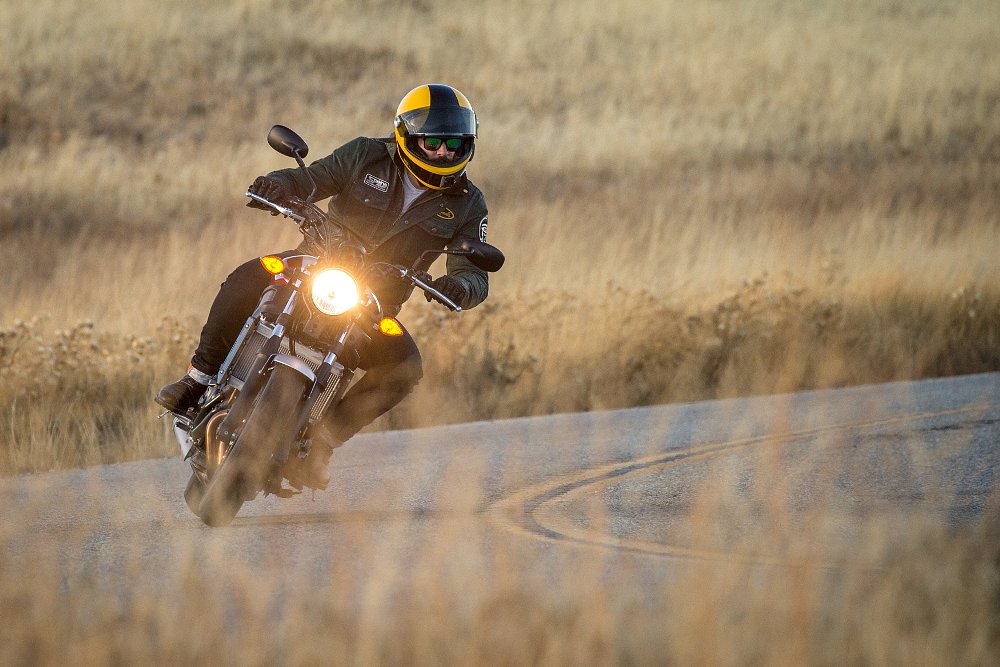
Leaving San Diego, traffic came to a complete halt. I clicked into lane splitting mode and hauled ass north on the I-5 freeway. For those of you concerned with the width of the new handlebars, you have nothing to worry about. This thing cut through the stopped cars like a surgeon’s scalpel. [Or, in this case, Spurgeon's scalpel - Ed.].
While there are no accommodations for luggage, I had no problem strapping a duffel bag over the passenger seat and hitting the highway. Those considering doing some light touring with this bike shouldn’t have any problem doing the same. That is, unless you want to take a passenger with you, in which case you might have to search out an alternate solution.
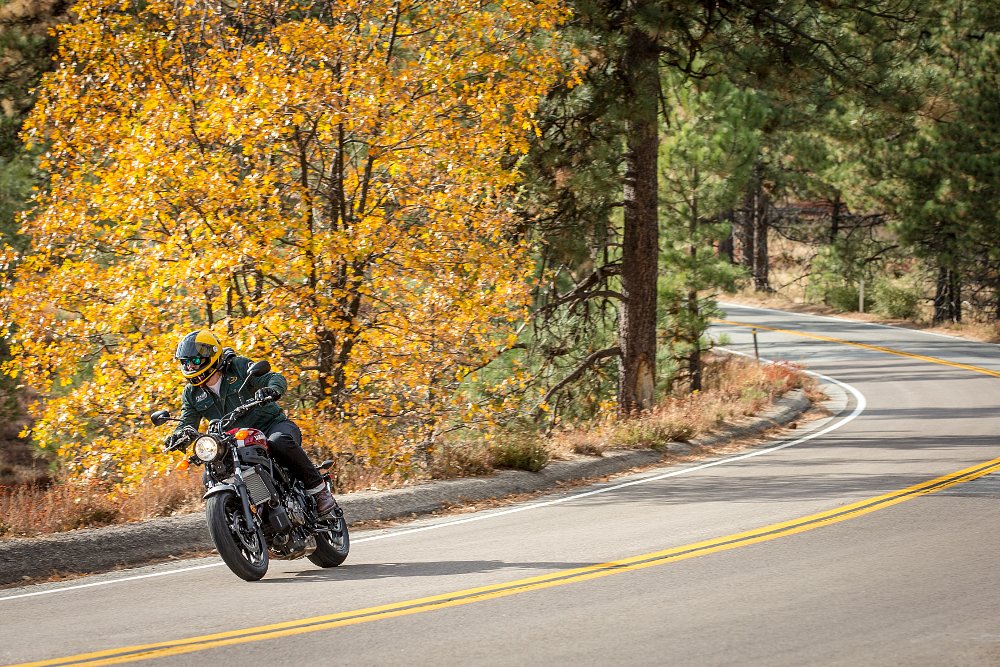
Once in Los Angeles, we spent a lot of time filming in the canyons and riding back and forth on city streets with a few quick jaunts on the highway. The engine is a lot of fun, with gobs of usable midrange power. The problem with the XSR900 is that you can’t get the thing out of second gear in the city and it feels like a caged lion pawing at the ground but not making any progress. The XSR700 allows you to play around a bit and have some fun at normal “gonna get myself a speeding ticket” speeds as opposed to “gonna go to jail and have to call dad to bail me out” speeds. That being said, it’ll still do triple digits in fourth gear with two more to go. Not that anyone would ever do that.
Over my three days riding this bike, I logged around 500 miles on a variety of different roads and I never felt like I needed more power. Yeah, if I was doing some real long-haul touring, this wouldn’t be my number one choice, but hell, that’s not what this bike is designed to do.
Final thoughts
So is the XSR700 the same bike as the FZ-07?
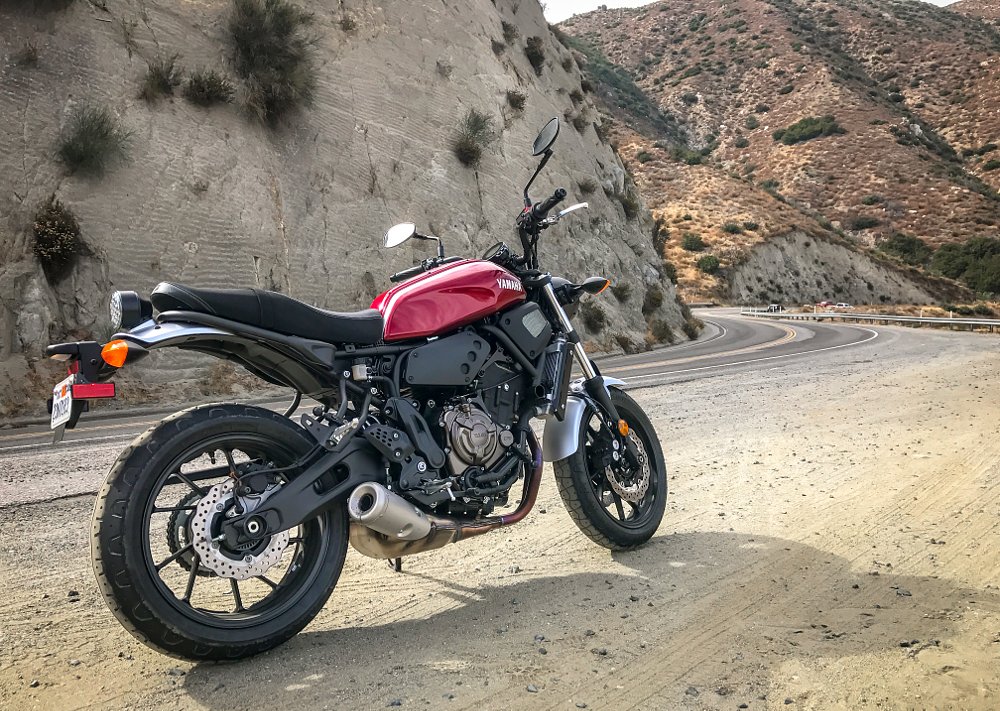
Not exactly, but it’s pretty damn close. And that’s not a bad thing. The FZ-07 remains a favorite among new and experienced riders alike and now with the XSR700 riders simply have a new flavor to choose from. There are subtle changes to the ergonomics and upgrades to the suspension, but really it is the XSR’s style that is going to set this bike apart for most riders.
The MSRP of the new XSR700 is $8,499, which means you’re going to pay a $900 premium over the 2018 MT-07. Sex sells, or so I hear, and I doubt that Yamaha is going to have a hard time finding folks to pay the extra money for this new XSR. However, if the XSR’s style isn’t your cup of tea, the MT-07 carries on the FZ-07 goodness.
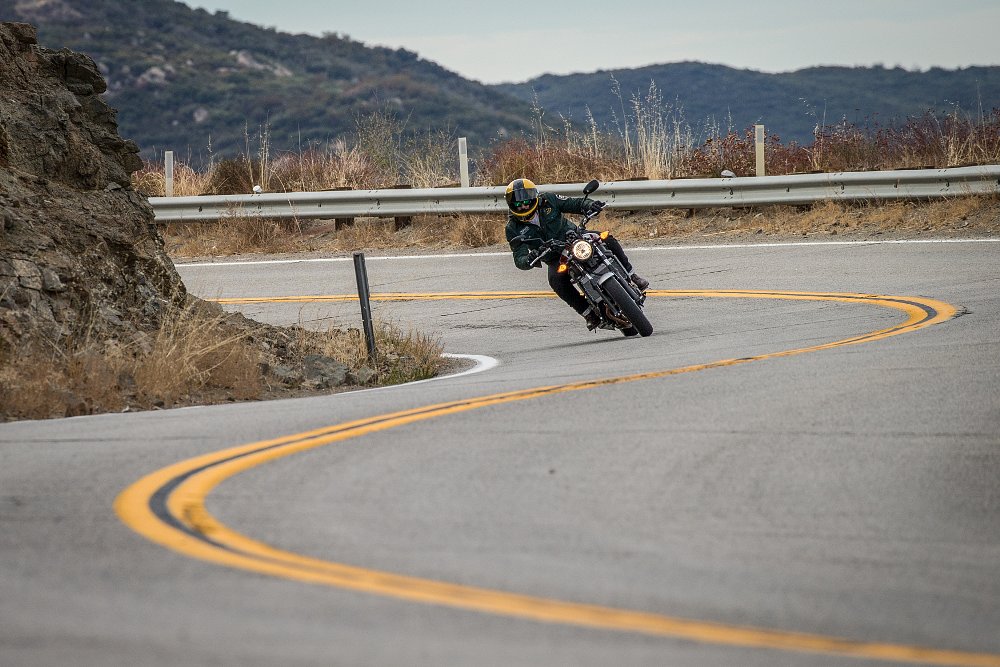
The American motorcycling public has been clamoring for this bike since the XSR900 was released. Lemmy himself demanded that Yamaha bring the XSR700 to the United States. It features less power and arguably more style than its larger, 847 cc counterpart.
At the end of the day, Yamaha built a machine for the riders who like the look of the XSR900 but who have no need for that level of power. In this day and age, I will applaud any effort by manufacturers to engage and attract new riders. And I can see this bike doing just that.





